Samsung QE65QN900A Review
8K has arrived
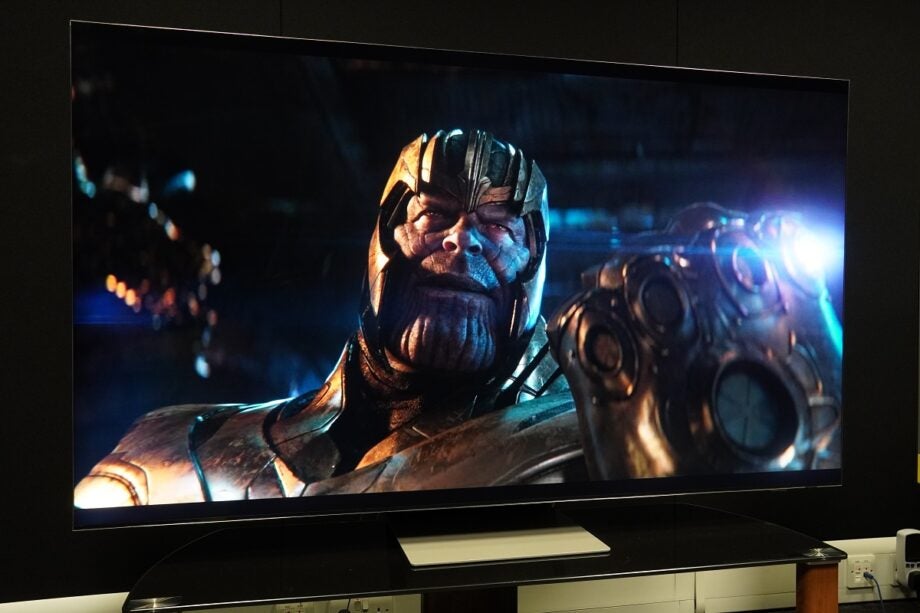

Verdict
The QN900A is an outstanding TV, a great audition of what 8K can bring to the TV experience even without much 8K content available. With a wide range of gaming features, an interesting take on smarts and some terrific upscaling, the QE65QN900A is one of the best TV experiences to be had in 2021.
Pros
- Irrepressible picture quality
- Well-conceived smart features
- Speedy gaming response
- Superb upscaling of lower quality sources
- Premium construction
Cons
- Expensive
- Speakers susceptible to bass distortion
- No Dolby Vision
Availability
- UKRRP: £4999
- USARRP: $4999
- EuropeRRP: €5999
- CanadaRRP: CA$7499
- AustraliaRRP: AU$12049
Key Features
- Quantum Matrix Technology ProNew Mini LED backlight
- Samsung Neo Quantum Processor 8KUpscales content to near 8K quality
- HDR10+ AdaptiveOptimises screen brightness for bright and dark rooms with supported content
Introduction
Every year is the year 8K is meant to invade living rooms worldwide. For a variety of reasons 2020 saw that prophecy pushed back, but 2021 looks like it will see 8K on the front foot.
And heading the line is Samsung. The South Korean electronics firm has aggressively pushed the format, driving prices down to more agreeable if not always affordable levels.
As 8K still suffers from a lack of content, the emphasis has turned to bringing lower quality sources up to par with Samsung’s latest upscaling system. And with Mini LED assisted brightness, the QE65QN900A TV might be the perfect way to audition 8K’s capabilities.
Design
- Excellent build quality
- Slim depth to screen
It’s a repeated refrain where Samsung is concerned, but its TVs all look very familiar. However, the level of construction for the QN900A is as reliable as ever.
The introduction of the Mini LED backlight lends the QN900A a slim frame. The 65-inch model I tested has a screen depth of 15.2mm sans stand, thinner than either Samsung’s QN94A 4K TV and LG’s G1 OLED. Mini LED scales down the size of the LED in the backlight, reducing the depth and enabling more to be allocated. This has profound effects not just on the design but the set’s brightness and contrast.
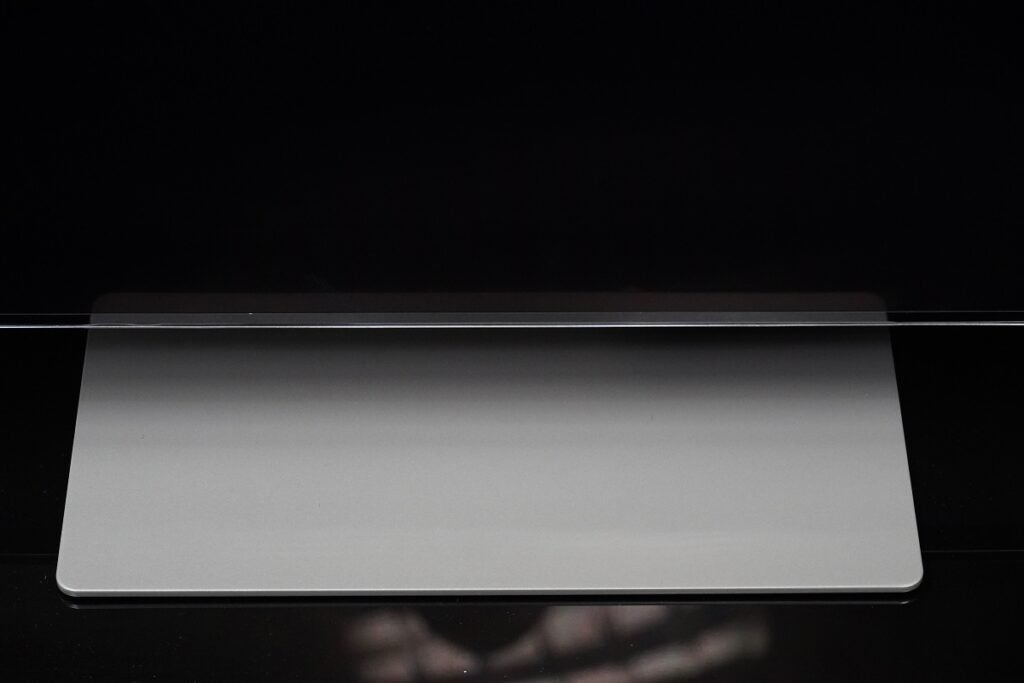
Perforated acoustic holes in the top and sides disperse audio, while the Infinity Screen offers edge-to-edge viewing with no distracting bezel. The rear of the TV is uniformly flat, and along with the detachable One Connect module, the QN900A is perfect for wall-mounting.
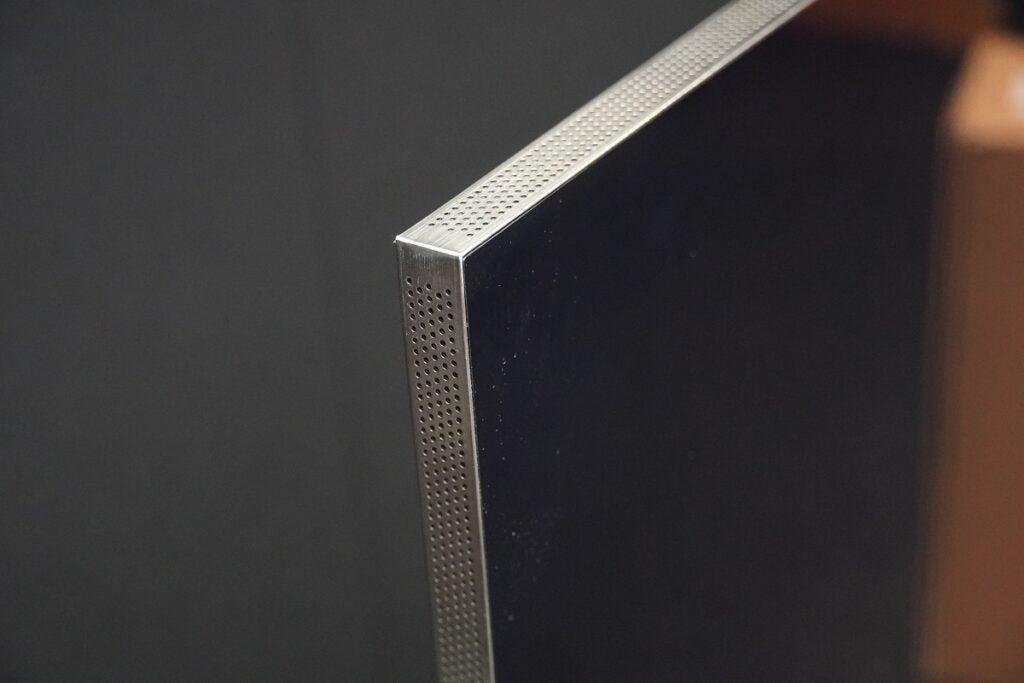
The One Connect box contains all the connections and feeds the TV with power, audio and video. It’s been redesigned to slot into the stand, reducing the TV’s footprint. It’s a very smart idea and I wished Samsung had brought it to more models.
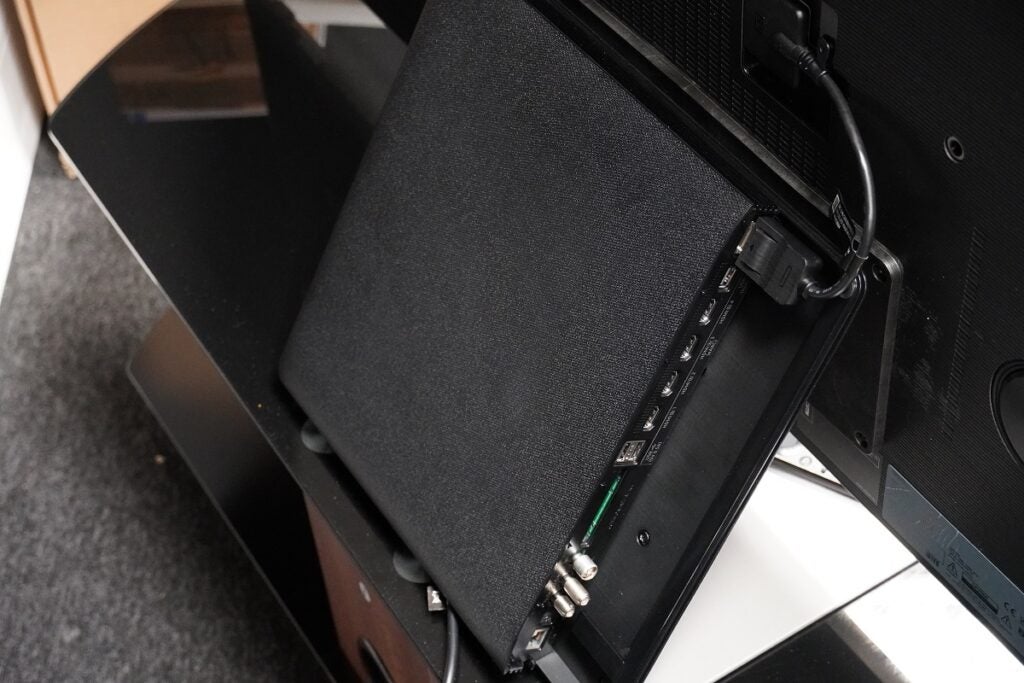
Interface
- Full house for digital assistants
- TV Plus as alternative Freeview Play
- Battery-less remote
Samsung’s onto version 6.0 TV of its Eden-based Tizen OS. It’s the same reliably functional effort that’s easy to navigate but may lack personality for some.
Freeview Play is not present, but all the UK catch-up and on-demand apps are. Most of the major apps are here, too, with the likes of Prime Video, Disney+, Netflix, Apple TV, BT Sport, Tidal, Spotify and NOW. Prime Video, Disney+ and Netflix support Atmos.
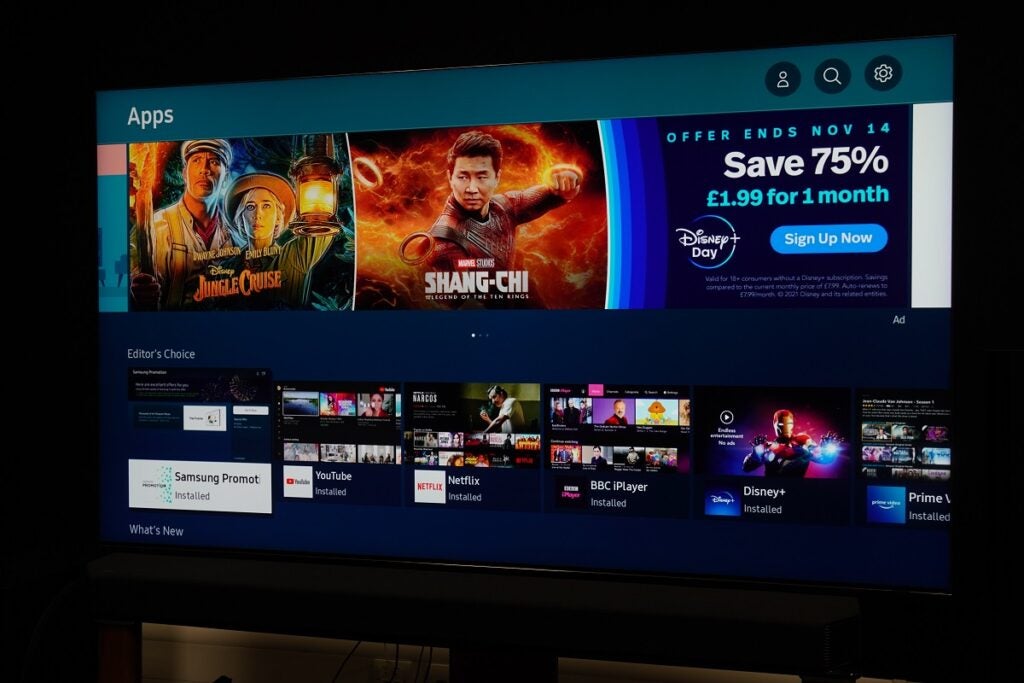
The alternative to Freeview Play is Samsung’s TV Plus service. Like Freeview it doesn’t require a subscription, with an EPG (Electronic Programme Guide) that lists VEVO, CNN, Bloomberg TV+ and a channel called Comedy (yes, really), as well as the Baywatch channel that’s an endless loop of all 9 series.
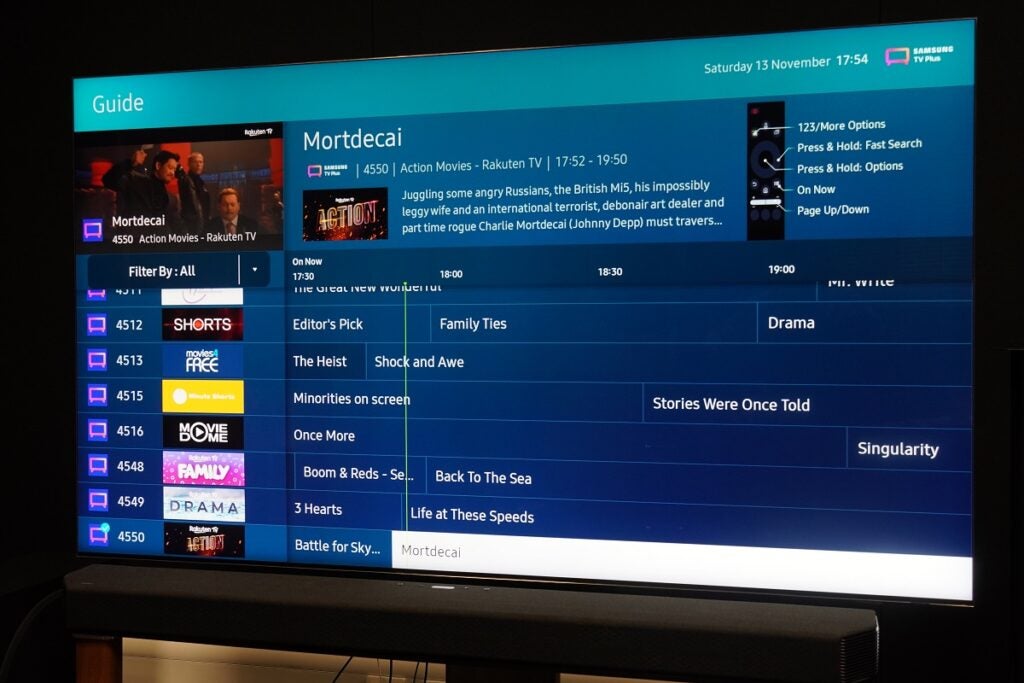
Multi View splits the screen into four windows. With Sport and Fitness presets, users can cast from a smartphone and watch what’s on TV at the same time. You can attach a USB camera or sync your camera’s phone to the TV too, though not all apps support Multi View. For digital assistants there’s Amazon Alexa, Google Assistant and Samsung’s own Bixby to choose from.
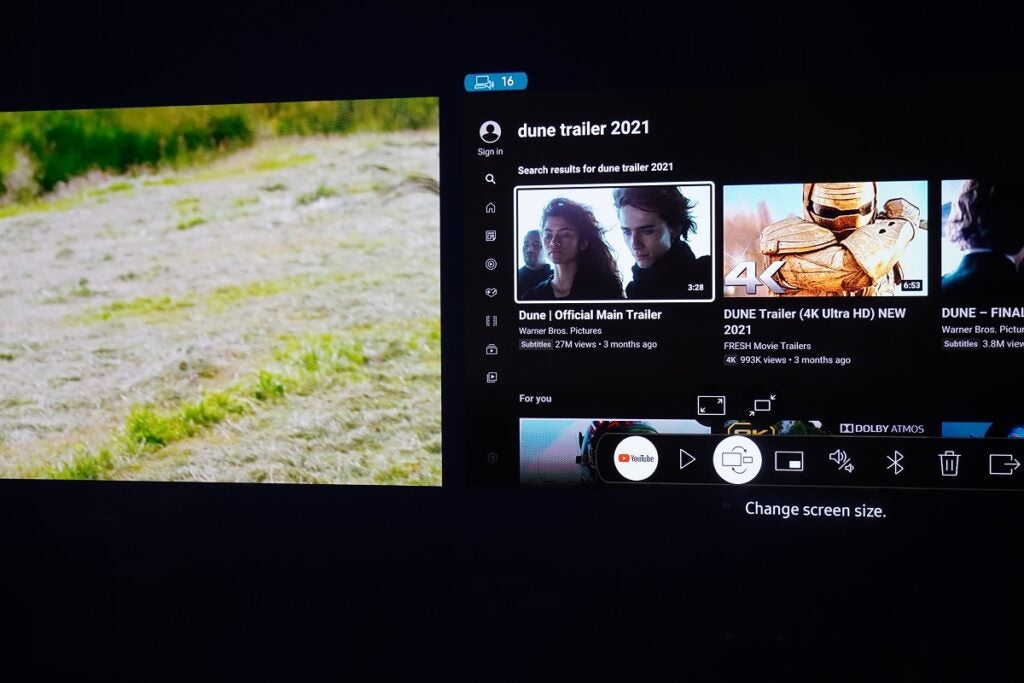
The QN900A ships with two remotes: a standard one and a smart version that’s the better of the two. Turn it over and there’s a solar panel that uses ambient light to charge it – a clever little innovation that requires no batteries.
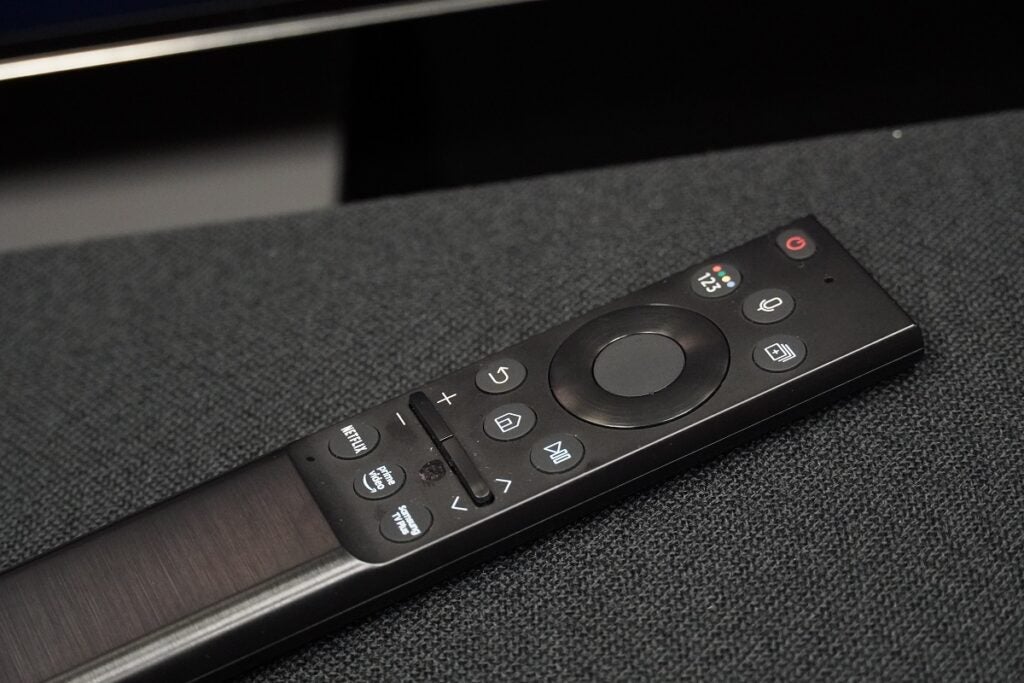
Features
- Class-leading latency
- Four HDMI 2.1 inputs
The Samsung QN900A is up to date with most of the latest gaming tech in Auto Low Latency Mode, Variable Refresh Rate, High Frame Rate (120Hz), as well as AMD’s FreeSync Premium Pro for reduced visual tearing and stuttering. Samsung TVs are also compatible with Nvidia G-Sync but not certified.
While LG has hoovered up gaming features left and right, Samsung still has the edge with latency. At 4K I measured latency at 10.1ms and at 120Hz you can expect that to be even lower.
Other gaming functions include Game Bar, which gives gamers quick access to settings at the bottom of the screen. Game Motion Plus improves image quality at a hit to latency, while HGiG HDR brings a more consistent HDR performance across games. The Super UltraWide Game View mode that stretches PC games to a 21:9 or 32:9 aspect ratio is included, too.
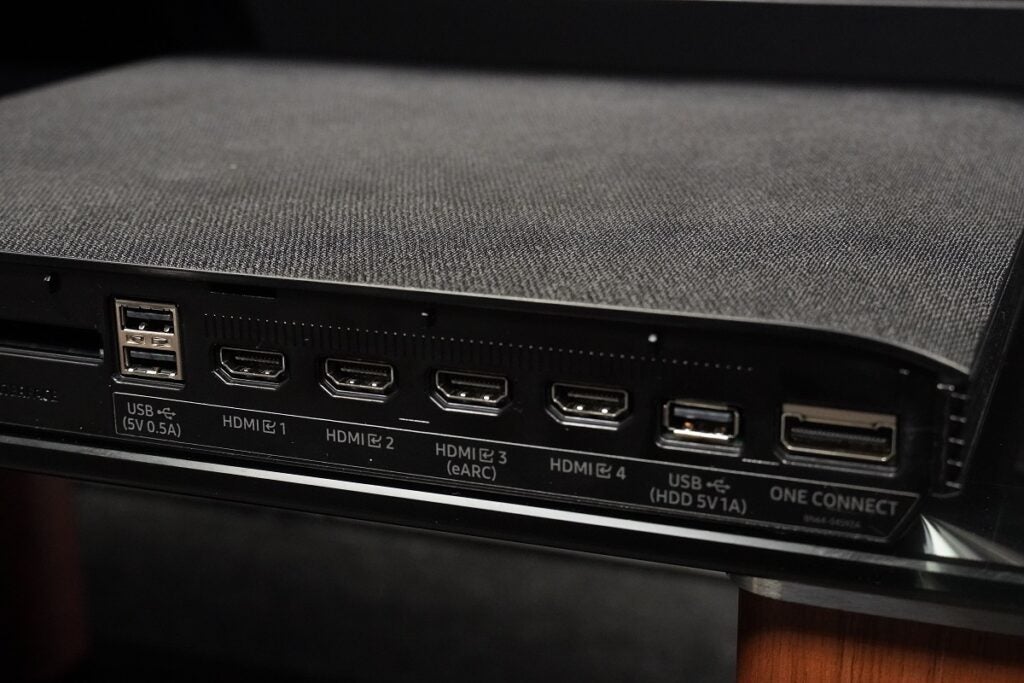
Connections on the external One Connect box weigh in at four HDMI 2.1, with HDMI 3 the eARC port for sending high-quality tracks such as Dolby Atmos to external sound systems. Ethernet, optical, a CI+ 1.4 connection, satellite, and aerial inputs, plus three USB 2.0 ports make up the rest. Wirelessly there’s Bluetooth 5.2 and Wi-Fi, the latter enables DLNA, AirPlay 2 and Chromecast.
Picture quality
- Brilliantly bright and colourful images
- Excellent black depth with little blooming
- Backlight still flummoxed by bright objects on black screens
- Impressive upscaling, especially with 4K sources
HDR10, HLG and HDR10+ are on the menu, with Samsung’s 8K TVs featuring HDR10+ in its adaptive form, too, which finesses the TV’s brightness in bright and dark rooms.
HDR10+ is available in Prime Video’s catalogue but it is nowhere near as widespread as Dolby Vision, which Samsung continues to lock out. Samsung would argue its TVs are bright enough to not need Dolby’s tone mapping and that HDR10+ is more considerate of a panel’s characteristics, but it would be nice to have Dolby onboard.
The QN900A offers a suite of picture modes in Dynamic, Standard, Natural, Movie and Filmmaker. With some processing features turned off, Dynamic offered the highest brightness (2600 nits) but only briefly and colours were too garish in look. Standard is good for everyday viewing, while Natural works for sports. Movie and Filmmaker are virtually identical, the latter limiting the impact of the QE65QN900A’s processing to preserve the creative intent of a film or TV series.
The addition of Mini LED to the 4K QLED range worked wonders, and with this 8K model, the brightness in combination with the Quantum Dot panel is even more brilliant to behold. The colours in The Pursuit of Love (iPlayer, HLG) are varied and natural in appearance, the Christmas dinner scene in the first episode looks absolutely dynamite.
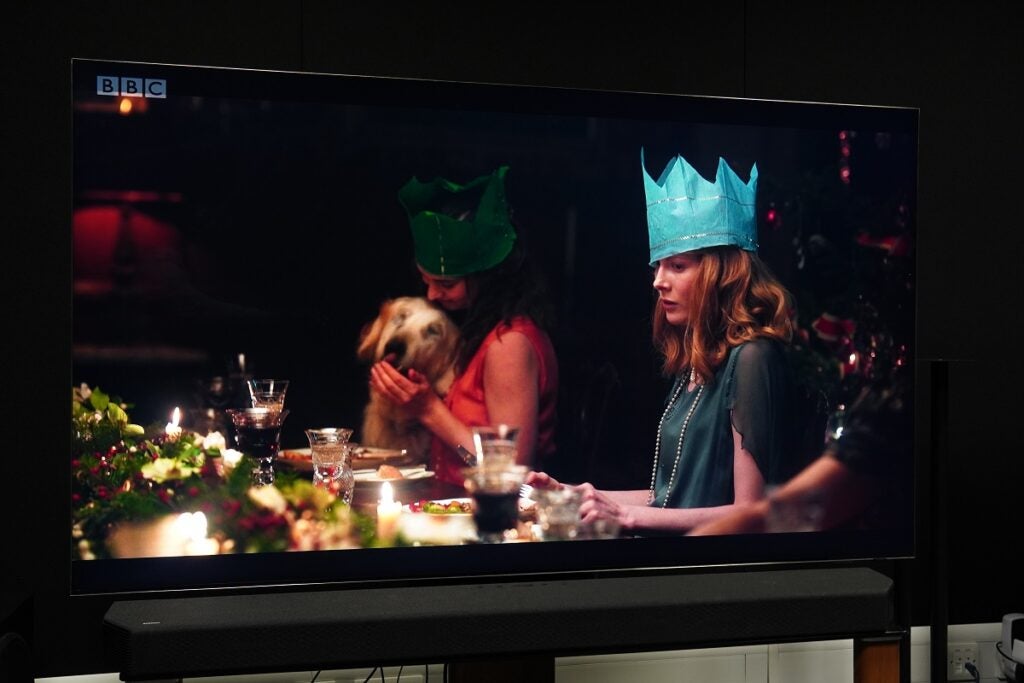
The brightness of the candle and Christmas tree lights is precise and intense, which makes them stand out quite beautifully in the dimly lit room, with very little blooming evident head-on. Switch the lights off or move to the side and there’s blooming but it’s not too distracting. Whites are depicted with a searing intensity, the shirt of Uncle Matthew’s shirt contrasting fabulously with the deep black of his dinner jacket. It’s a delicious looking image.
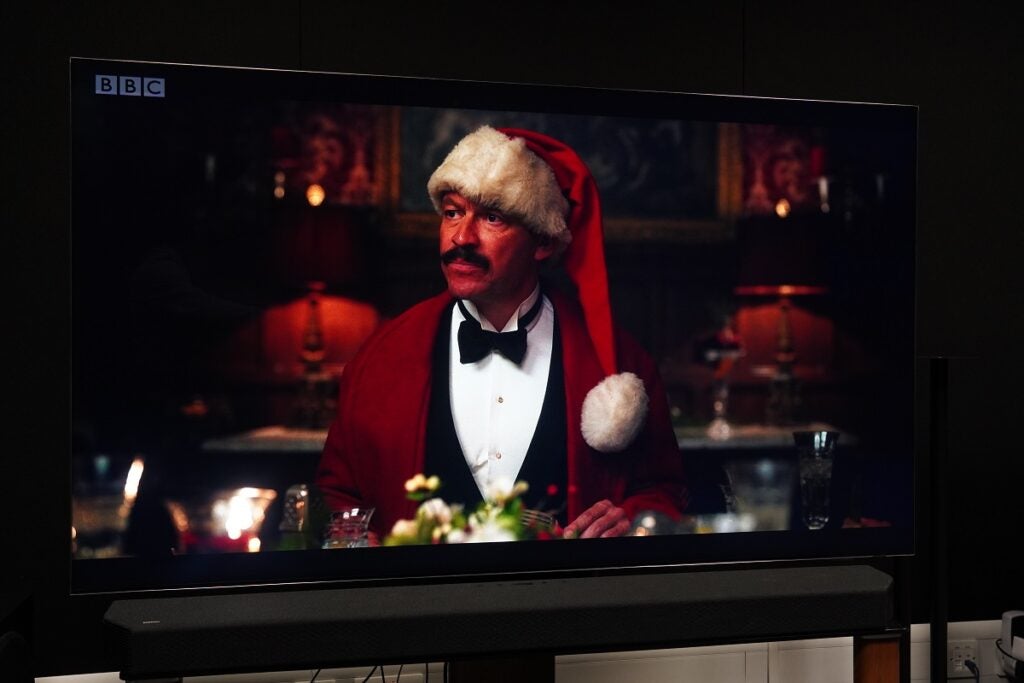
The 8K models boast the Neo Quantum Processor 8K that uses 16 neural network models to upscale images. As Samsung explains it, the 16 networks are 16 cooks in a kitchen, each with their own speciality as opposed to one or two cooks working on a range of recipes. Focusing on one thing brings specificity.
The effect is brightness, sharpness and contrast are fed with more information, and watching standard definition content may not initially ‘wow’, until you realise the TV is guessing about 30 million pixels. With that in mind, the results are mightily impressive.
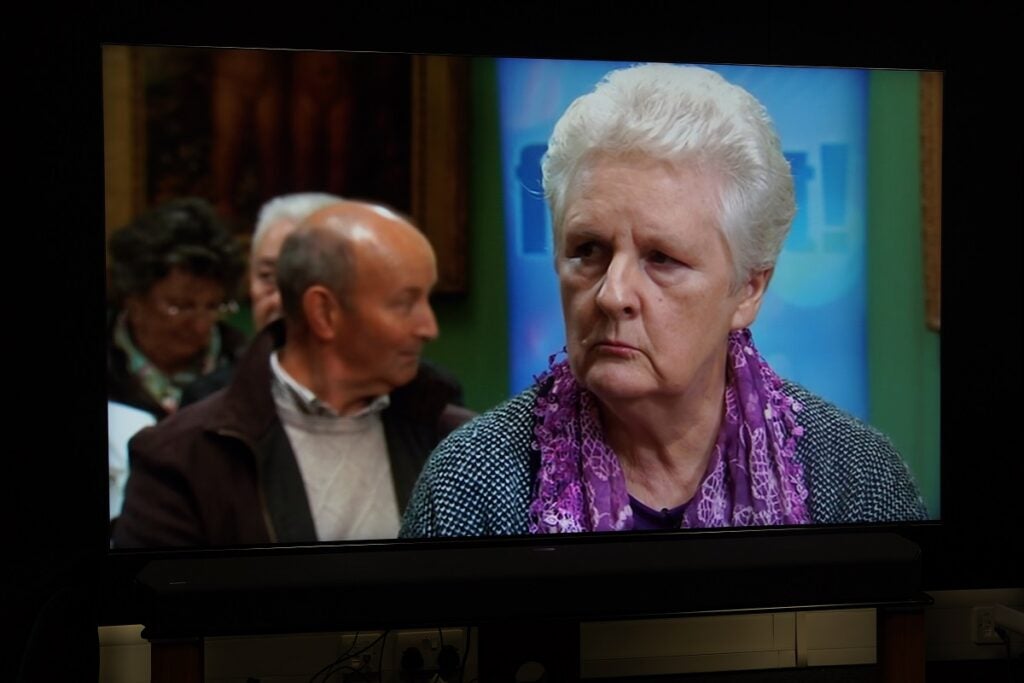
Flog It! on BBC One is predictably soft – particularly in faces – but more detail and texture is wrung out of clothing than expected, the level of detail visible in surfaces is superb. Also excelling is the range of colours, with complexions conveyed naturally. You can see the variation in Bradley Walsh’s patterned jacket on The Chase, revealing the fabulous level of fine detail the QE65QN900A can summon.
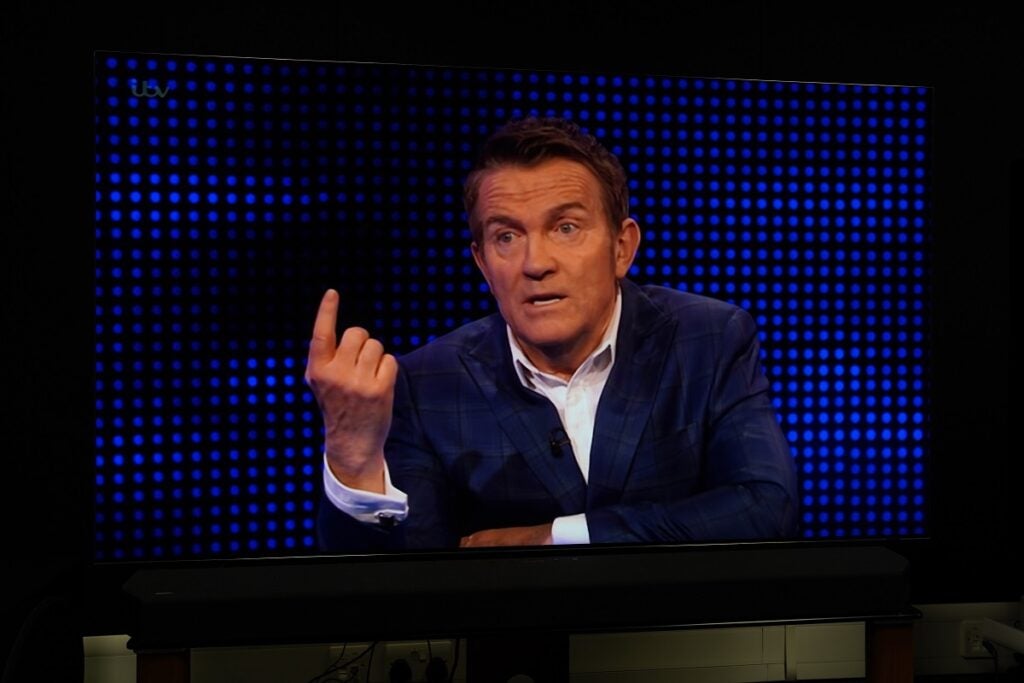
Since 8K content is still sparse, give the QN900A 4K and it’s a terrific spectacle. The opening IMAX shot scene of Wonder Woman 1984 is gorgeous: the sun-dappled sands of Themyscira, the azure blue of the sea and greens of a forest stun in terms of their tone and hue. The red, yellow, and blue of the Wonder Woman costume are vibrant, marking Diana apart from the mere mortals around her. Wonder Woman 1984’s setting is full of bright colours, and the QN900A laps it up with enthusiasm.
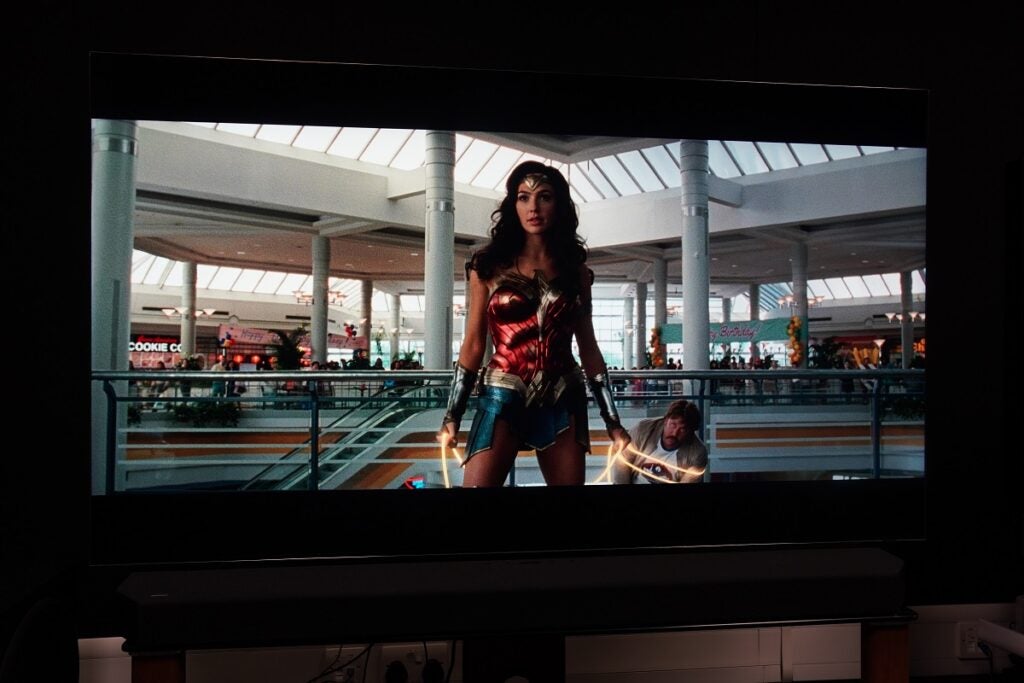
Staggering describes the level of detail the QN900A conjures. The increased resolution and pixels produce sharpness and clarity beyond 4K TVs. Detail extracted from faces, costumes and production design is phenomenal, with close-ups revealing every facial detail. As an advert for 8K’s benefits I am completely sold.
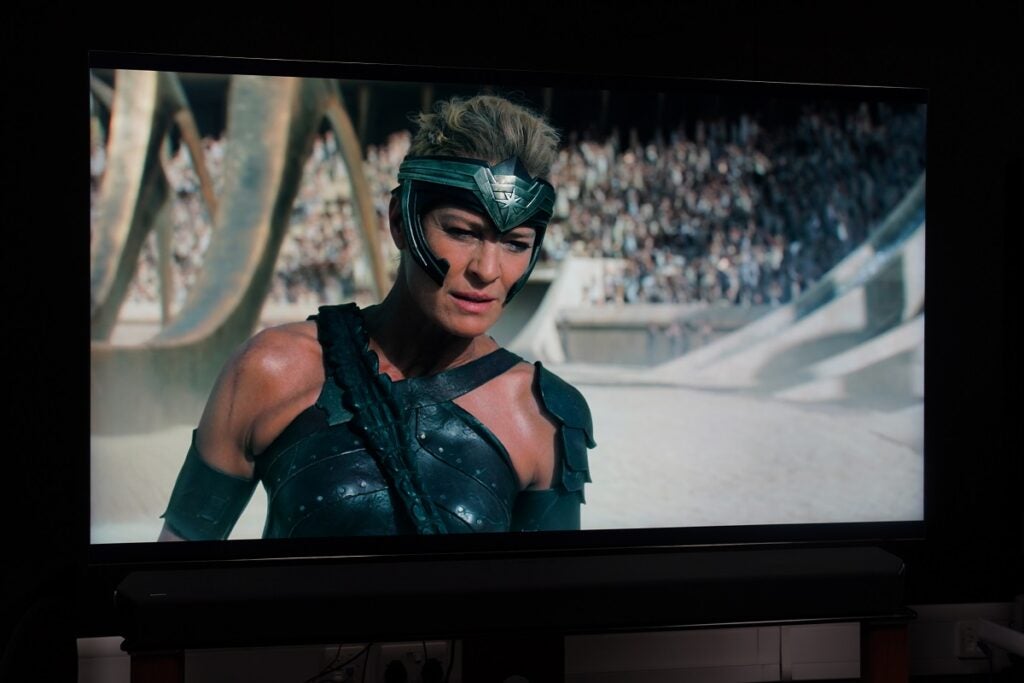
The precision of the Quantum Matrix Pro backlight also impresses, the 1344 dimming zones help the QN900A reach OLED levels of black depth and contrast. Bright objects next to black borders are bright with no blooming or bleed. Dimming is rarely noticeable; the only visible change came when watching daytime TV.
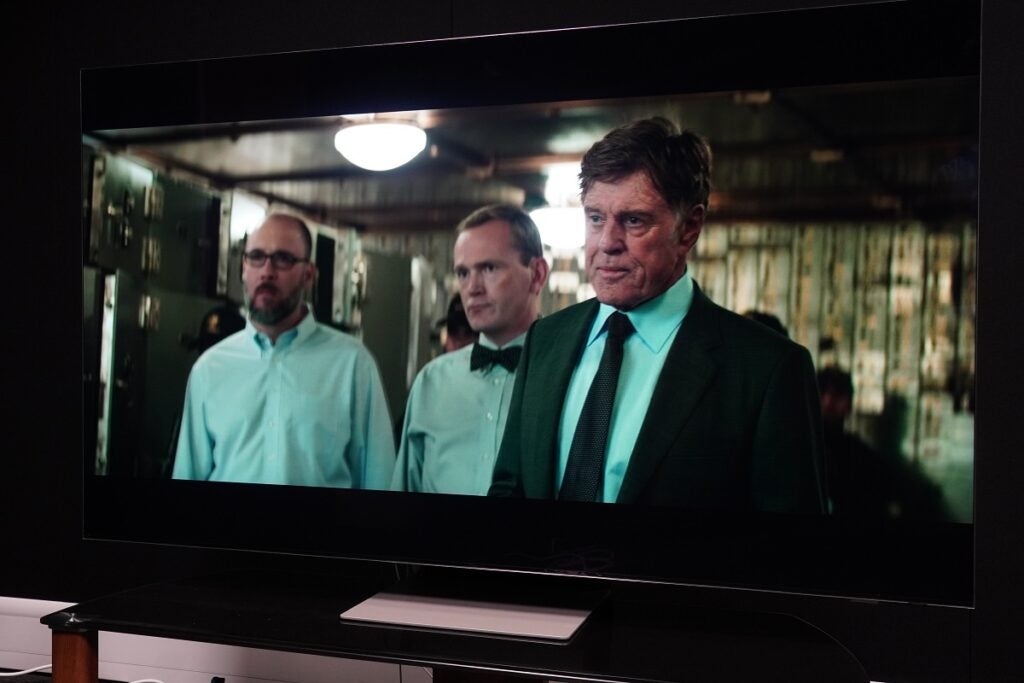
Having tried every disc I could think of to outwit Samsung’s dimming algorithm, it turns out opening credit titles with large fonts cause lots of blooming (the opening titles of Predator) and lots of small bright objects on a black screen can confuse, like when Joe heads to The Great Beyond in Disney’s Soul. Blooming also occurs when status bars or playback controls are brought up on screen and at wider angles.
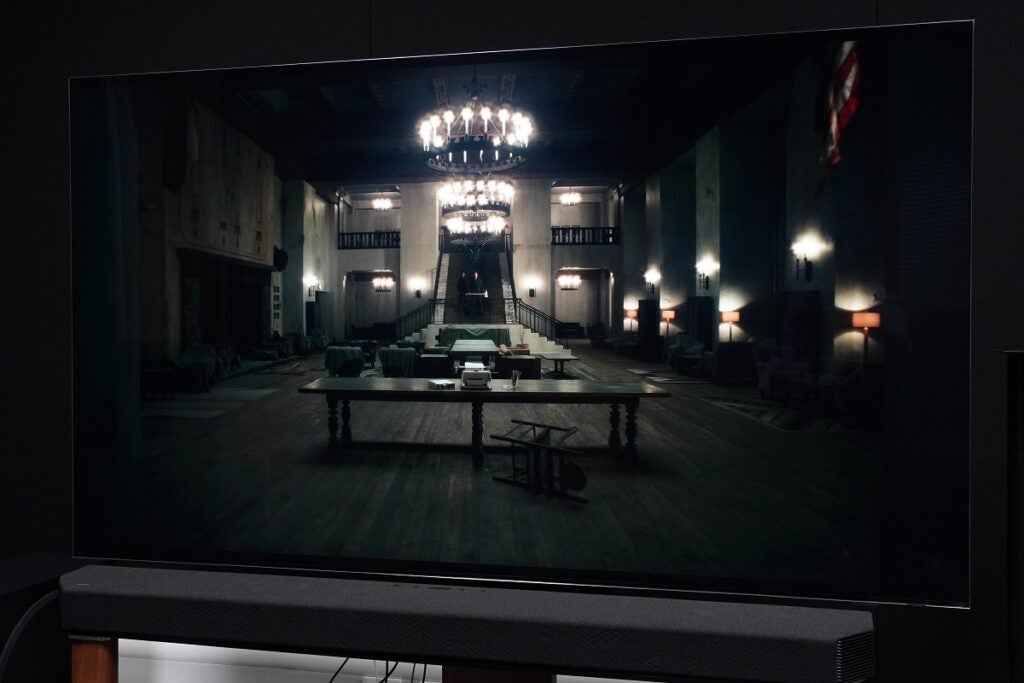
With YouTube the only place to easily find 8K content, watching the Ultimate Wild Animals Collection and the jump in resolution affords an exceptional detail levels. Whether it’s the fur of a deer, the wrinkly hide of an elephant or the scales of a lizard, you feel as if they’re right there in front of you.
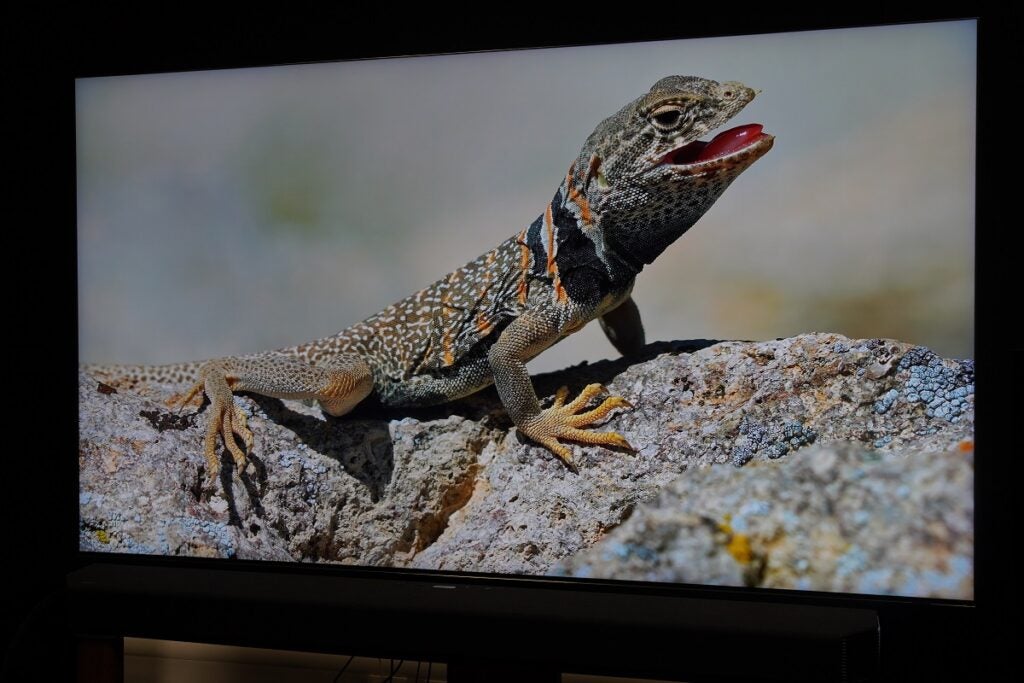
Motion handling is the weakest aspect of the QN900A’s performance. With Auto on in the Picture Clarity settings, the opening of WW1984 has an overly glossy and processed look, smearing evident as the camera tracks a young Diana through the trees, as well as panning shots that feature distracting stutter. The ‘Custom’ option is better; less forceful and more natural. Or you could just forgo motion processing altogether and turn it off.
Sound quality
- Crisp delivery of dialogue
- Spacious soundstage
- Bass causes distortion with TV speakers
- Flat and not the most dynamic
It’s a familiar refrain and I’ll get it out of the way early. The QE65QN900A could do with a soundbar.
The TV’s internal speakers are fine for daytime viewing or streaming that doesn’t require whizz-bang sonics, but it’s a bit tepid dynamically at lower levels and raising the volume introduces bass distortion. Even watching the news at higher volume levels can result in some buzzing, and in the kinetic action scenes of WW1984 the effect can distract.
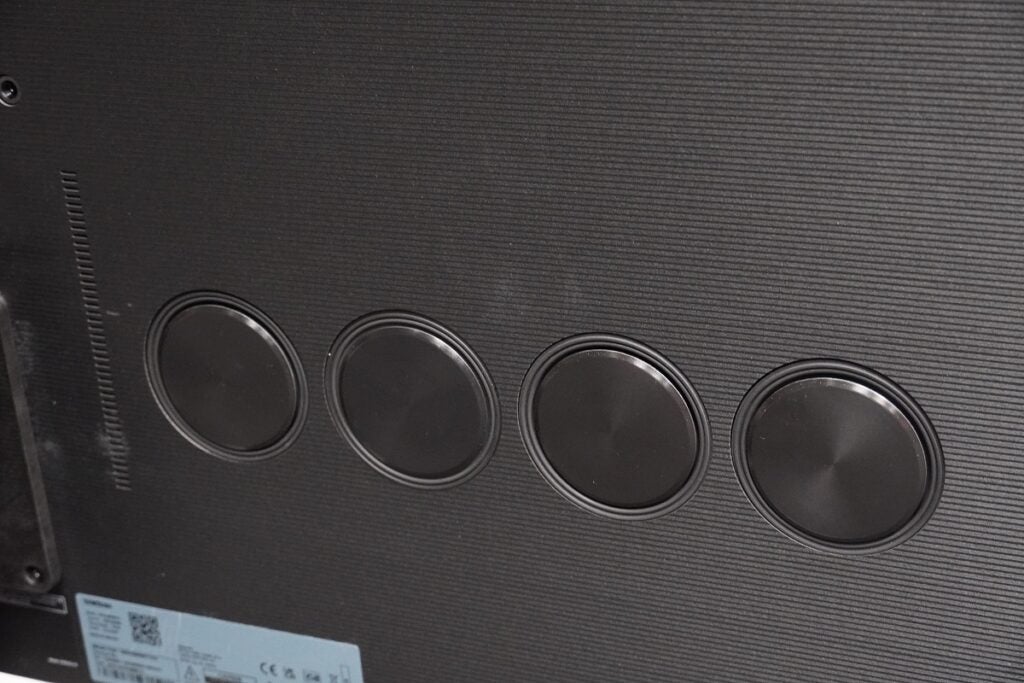
With 80 watts fed to the OTS Pro six speaker system (two upfiring, two in the sides, two in the bottom with woofers around the back), the Samsung QN900A creates a soundstage that’s wider and taller than its frame. It’s not Dolby Atmos but produces similar results.
Playing World War II film Fury and background sound effects in the distance – airplanes on bombing runs – can be heard above the TV when Brad Pitt’s Wardaddy talks to Jason Issacs’s beleaguered captain. Most TVs would place the effects in the ‘back’ of the scene to create depth but Samsung’s approach feels more natural.
The Adaptive Sound+ mode is said to tune the TV’s audio performance in accordance with its surroundings, but I didn’t hear much difference. The Amplify mode adds more scale, detail and excitement, but the soundstage is still flat. Dialogue is crisply delivered, but the QN900A lacks the heft of an external sound system. The scene that reintroduces Diana in 1984 with a Pontiac muscle car heaving down the street lacks, well, muscle; described with all the thrust of an electric car.
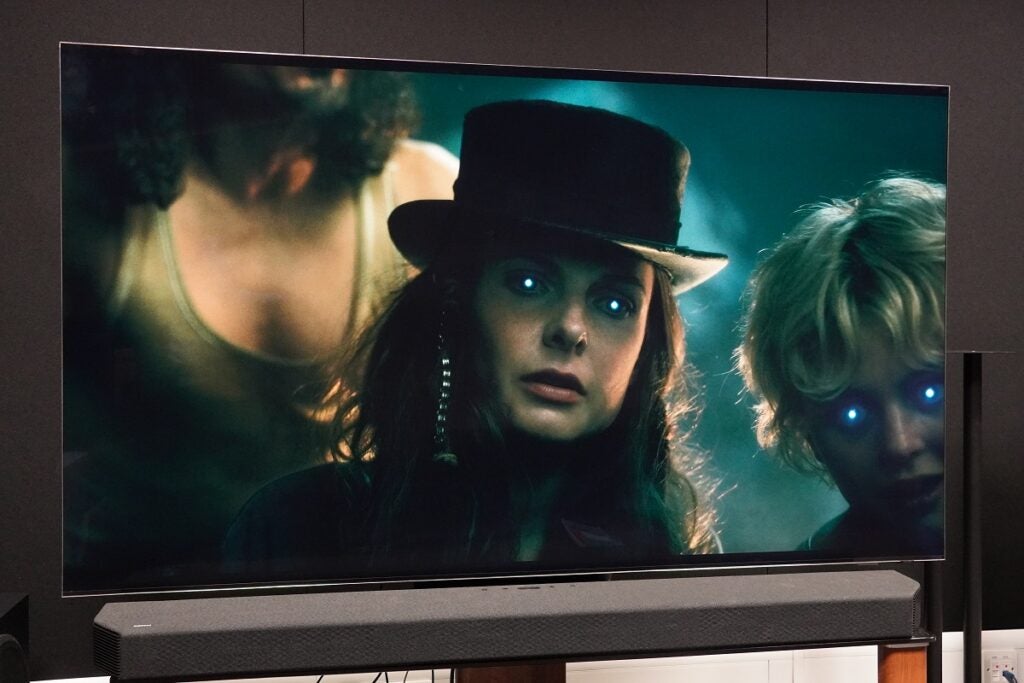
Partner the QN900A with Samsung’s Q-Series soundbars and activate the Q-Symphony mode and it’s a much better experience. With bass handled by the subwoofer, the TV places effects with unerring accuracy on screen. It is flatter than having the soundbar take care of everything, and tonally the TV’s speakers are crisper, but the effect is like a cinema where sounds pour off the screen. Samsung is onto something with Q-Symphony.
Latest deals
Should you buy it?
For its exceptional picture quality This 8K produces dazzlingly bright and colourful images. It is an outstanding effort
It’s expensive At £5k you’ll need deep pockets for the QN900A. If 8K is going to push forward, that price needs come down
Final Thoughts
Right now, there’s little 8K content for the QN900A to take advantage of, but 4K content has never looked as good as it does on this TV. This TV’s picture quality is, at times, jaw droppingly good.
The sound quality is probably as good, and an area where some extra spend on a soundbar would improve matters. The smart features are well conceived and differ from the usual, while the overall feature set is about as thorough as you can get aside from the lack of Dolby Vision, an omission that continues to confound.
If you’re not sure about the 8K revolution, the QN900A offers the most convincing case for its presence. It is outstanding and one of Samsung’s best TVs.
How we test
We test every televisions we review thoroughly over an extended period of time. We use industry standard tests to compare features properly. We’ll always tell you what we find. We never, ever, accept money to review a product.
Find out more about how we test in our ethics policy.
Tested for several weeks
Tested with broadcast content (HD/SD), video streams and demo discs
Tested with real world use
FAQs
There’s no app for Peloton. Samsung has other fitness options, which include its Health app.
In its Intelligent Settings mode, there’s Adaptive Picture, Adaptive Sound+, Active Voice Amplifier and Adaptive Volume.
No it does not. It supports HDR10+ instead.








